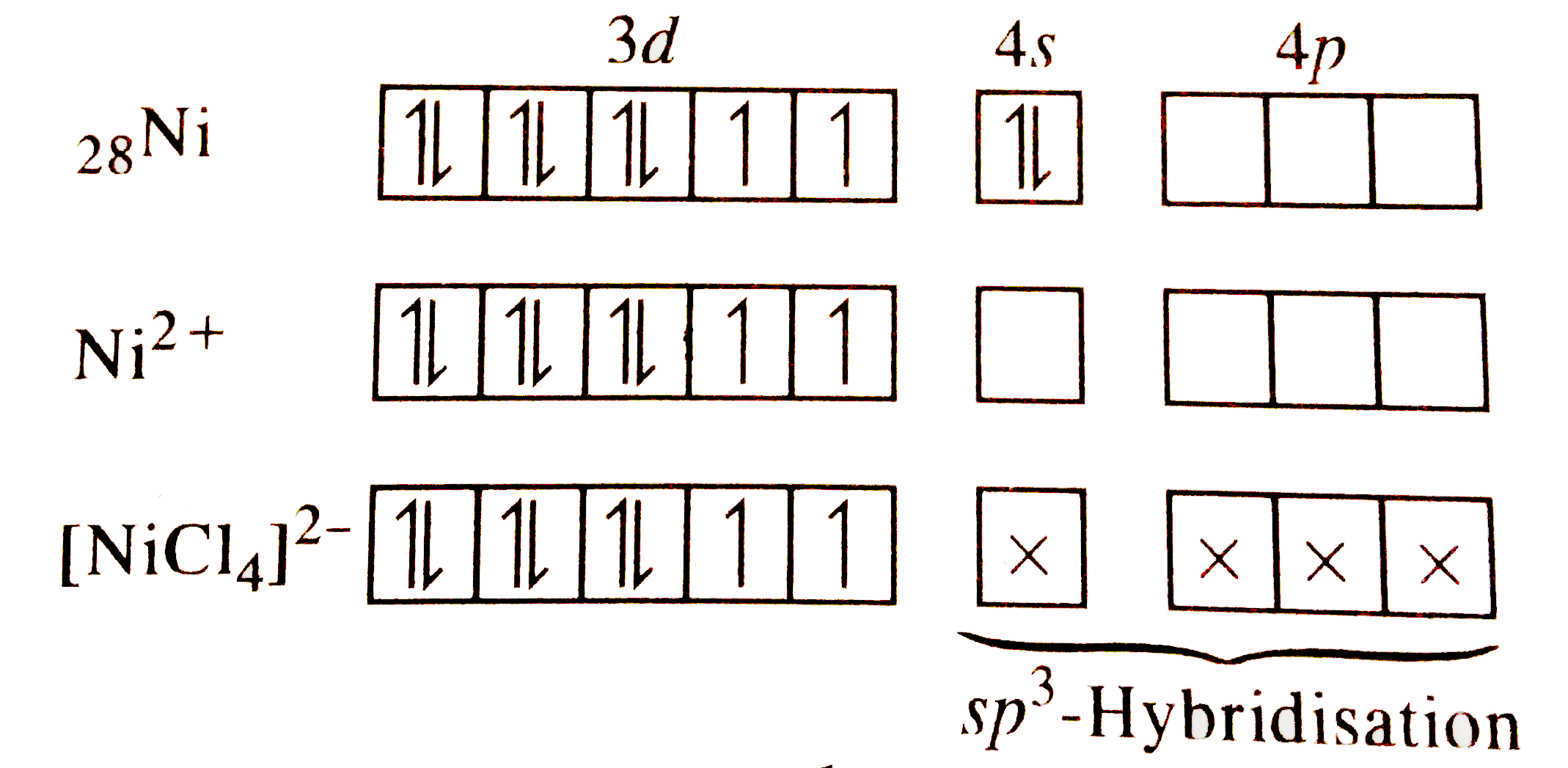The species having tetrahedral shape is
A
[PdCl4]2−
B
[Ni(CN)4]2−
C
[Pd(CN)4]3−
D
[NiCl4]2−
Video Solution
Text Solution
The correct Answer is:D
The greater the ease with which the ligand can approach the central ion, the greater is the crystal field splitting caused by it .
The magnetic measurements of the complex [NiCl4]2− show that it is paramagnetic and has two unpaired electros. Evidently in this case, the 3d-orbitals remain undisturbeb and sp3 hybridisation occurs resulting in tetrahedral structure of the complex.

Here XX represents electron pairs donated by Cl− ions.
|
Topper's Solved these Questions
- CO-ORDINATION COMPOUNDS BOOK - DINESH PUBLICATIONCHAPTER - CO-ORDINATION COMPOUNDS EXERCISE - COMPREHENNSION TYPE MCQS
5 Videos
- CO-ORDINATION COMPOUNDS BOOK - DINESH PUBLICATIONCHAPTER - CO-ORDINATION COMPOUNDS EXERCISE - MATRIX MATCH TYPE MCQS
3 Videos
- CO-ORDINATION COMPOUNDS BOOK - DINESH PUBLICATIONCHAPTER - CO-ORDINATION COMPOUNDS EXERCISE - REVISION QUESTIONS
165 Videos
- CHEMISTRY IN EVERY DAY LIFEBOOK - DINESH PUBLICATIONCHAPTER - CHEMISTRY IN EVERY DAY LIFEEXERCISE - Unit test-9
50 Videos
- CYANIDES, ISOCYANIDES, NITROCOMPOUNDS AND AMINESBOOK - DINESH PUBLICATIONCHAPTER - CYANIDES, ISOCYANIDES, NITROCOMPOUNDS AND AMINESEXERCISE - Unit test - 8
20 Videos
Similar Questions
Knowledge Check
The species having octahedral shape is :
ASF6BBF−4CPCl5DBO3−3The species having pyramidal shape is :-
AOSF2BBrF3CSiO−23DSO3The species having pyramidal shape is
ASO2BBrF3CSiO2−3DOSF2
